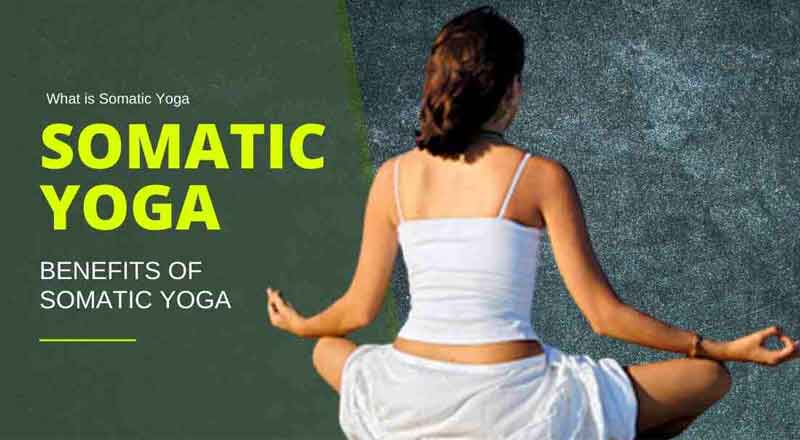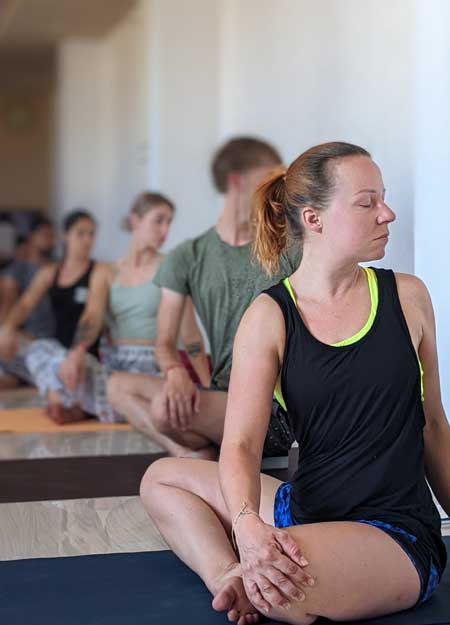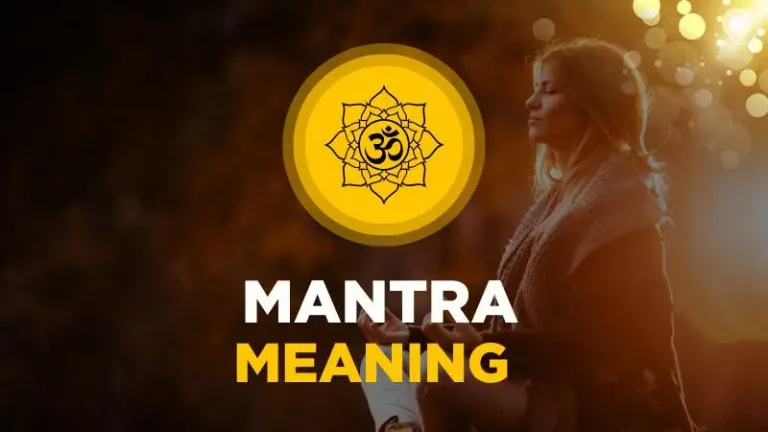
Table of Contents
Somatic Yoga
Before knowing what somatic yoga is, let’s understand what the word somatic actually means. Somatic originates from a Greek word sōma which literally means body. Now, Somatic means “relating to the body as distinct from the mind”, “of the body”, “embodied” or “bodily”.
Somatic Yoga History
Thomas Louis Hanna who was a philosophy professor and movement theorist, coined the term somatics in 1976. Thomas studied neurology at the University of Florida Medical School.Through the study of neuroscience, he observed that every psychological process occurs along with changes in the systems of the body.
He discovered that psychological issues cannot be fully addressed without knowing how one’s physical body is functioning, mind and body operate together in harmony.
He used his learnings of how the nervous system controls the muscles to develop advanced movement techniques which were highly effective in releasing long-standing, involuntary muscular contraction and retraining the nervous system.
Thomas taught his clients how they can regain sensation and motor control, by unlearning what they have learnt through their lifetime, and they experienced remarkable recoveries from back pain, sciatica, disc degeneration, arthritis, frozen shoulder, and a lot of other functional disorders.

What is Somatic Yoga
Now that we know what somatic is, we are well aware that working with mind and body simultaneously can help revive our contracted stiff or tight muscles.
Why at all our muscles become tight or restricted?
It can be due to various reasons like poor posture, fatigue, dehydration, injuries, regular habitual patterns, development reasons or emotional stress/ trauma.
Somatic yoga is a type of movement therapy that uses different movements to retrain and re-educate our brain. It works by training our brain to unlearn existing muscle – memory and develop new muscle memory.
This is only possible with consistent disciplined practice. Muscle memory is basically a neural pathway in our brain. As we practice a movement more and consistently, the stronger that pathway becomes. So, to develop a new muscle memory, we need to create a new neural pathway and strengthen it over time by practicing and training regularly with discipline.
Somatic yoga can also become a means to channelize our emotions and enhance how we are feeling physically. Scientific studies shows that mental health conditions like stress, depression, trauma and anxiety does not only have psychological effects but can also manifest physically in form of muscle tension, pain, loss of appetite, migraines, fatigue, gastrointestinal issues etc
Somatic yoga is a body-centered approach to healing and self-awareness. It involves turning our senses inwards and moving our body with complete awareness, to release tension, promote relaxation, and connect with one’s emotions. This can help emotional balance, trauma recovery and improved mental health. Thus, somatic yoga can also become a means to channelize our emotions and enhance how we are feeling physically.
Benefits of Somatic Yoga
Physical benefits of Somatic Yoga
- Reviving sensation and movement – Practicing somatic yoga encourages practitioners to become more attuned to their physical sensations and awaken dormant muscles. It can slowly improve range of motion by mindful movements and observing areas of numbness, tingling, or weakness.
- Unlearning old muscle memory and building new neural pathways – By practicing new mindful movements gradually practitioners can break free from their accustomed patterns and build new muscle memory.
- Relax contracted muscle – Gently stretching with complete body awareness, deep breathing and relaxation improves flexibility, mobility as well as helps release tension stored in the body.
- Tuning in with the body – As somatic yoga requires the practitioners to turn their senses inwards it encourages complete awareness of the body helping the practitioner observe each and every sensations areas of pain, stiffness or discomfort.
Mental benefits of Somatic Yoga
- Balance emotions – Somatic yoga involves holding postures and movements that promotes releasing of stored emotions in the body. This can help the practitioner express suppressed emotions. It emphasizes complete awareness which pushes us to be totally present and total presence can make the practitioner aware of their thoughts, emotions and how they manifest in their body.
- Releasing trauma – Somatic yoga can help release stored trauma in the body by releasing the contracted muscle, physical pain or tension through movement, body awareness and breath work. It can help one feel more complete because it brings together parts of self that are disconnected or lost due to trauma.
- Regulates mental health – By mindfully moving the body with complete awareness and by following a proper breathing technique somatic yoga can help a practitioner become more calm, present, totally in tune with their mind and body. It reduces stress, elevates self – awareness, enhances mood and promotes resilience.
Somatic yoga asanas you can try
Disclaimer : Practicing these yoga asanas by yourself is generally safe, it is important to listen to your body and avoid any kind of exhaustion. If any kind of pain or discomfort is experienced during practice stop immediately and if you have any severe muscle contraction or immobility please consult a doctor before practicing these you can then practice these under the guidance of a professional certified somatic yoga instructor.
Somatic yoga should be practiced slowly with full control and complete awareness to your entire body. Observe how your body is going into a pose and how it is coming out of it.
Hold for a few seconds feel your every body part, your joints, the sole of your feet, your muscles and so on.
Here are a few poses you can try together with one another in a flow.
- Cat ose (Marjari Asana) and Cow Pose (BitilAsana): While keeping your awareness on the neck, spine, navel, chest and hips both of these poses can be practiced one after the another for 10 counts or whatever counts your body is comfortable with.
- Bridge Pose (Setu Bandha Sarvangasana) and Constructive Rest Pose: You can try a variation of this pose by keeping your palms flat on the mat instead of holding your ankle. Now, while keeping your awareness on your hips, thigh muscles, sole of the feet, arms and spine hold into bridge pose for a few seconds and come back into constructive rest pose with complete awareness and then go back into bridge pose.
- Downward Facing Dog Pose (Adho Mukha Svanasana) and Upward Facing Dog Pose (Urdhva Mukha Svanasana): Keeping your awareness on your palms, feet, ankles, arms, legs and back you can come into downward facing dog pose holding it for a few seconds and then slowly sliding into upward facing dog pose. You can try these poses one after the other in sequence.
Conclusion
Somatic yoga is a movement technique for everyone. From someone trying to reignite movement in frozen parts of the body to someone looking to connect with their body on a deeper level.
This movement technique helps the practitioner delve deep in their bodies and develop a better mind-body connection thus, it proves to be a boon for both our mental and physical health.




